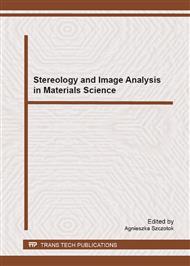p.41
p.47
p.53
p.58
p.64
p.70
p.77
p.83
p.89
Quantitative Characterization of Shrinkage and Gas Pores in Turbine Blades Made of MAR M247 and IN 713C Superalloys
Abstract:
The subject matter of the paper is the quantitative evaluation of gaseous and shrinkage porosity in construction elements of a low-pressure aircraft engine turbine using quantitative metallography methods. The research material comprised blades and blade segments with a polycrystalline structure made of IN 713C and MAR M247 superalloys. One of the major problems that occur in the precision castings is their porosity: gaseous, which is the result of emission of dissolved gases from the superalloy during solidification, and shrinkage, being the result of shrinkage of the superalloy and of insufficient feeding of the interdendritic space. The developed practical procedure of selective measurement of gaseous and shrinkage porosity enabling the examination of precision castings made of high-temperature creep resisting nickel superalloys is presented.
Info:
Periodical:
Pages:
64-69
Citation:
Online since:
February 2013
Authors:
Price:
Сopyright:
© 2013 Trans Tech Publications Ltd. All Rights Reserved
Share:
Citation:


